For Product Registration and general enquires please contact us
Cucamelon
$7.39 – $123.99
Also known as the Mexican Sour Gherkin, cucamelon seeds produce vines that could be mistaken for regular cucumber plants. The plants are not quite as productive as cucumbers, but the fruits are amazingly cute and novel.
Shipping & Returns
West Coast Seeds ships anywhere in North America. However, we are not able to ship garlic, potatoes, asparagus crowns, bulbs, onion sets, Mason bee cocoons, or nematodes outside of Canada. We regret, we cannot accept returns or damages for orders outside of Canada. The minimum shipping charge to the US is $6.99.
Description
More details about Cucamelon
Melothria scabra. Also known as the Mexican Sour Gherkin, cucamelon seeds produce vines that could be mistaken for regular cucumber plants. The plants are not quite as productive as cucumbers, but the fruits are amazingly cute and novel. They look like tiny watermelons, but have a very appealing cucumber flavour with slight citrus notes. Eat them fresh or pickle them for a crunchy treat. Harvest them at the 2cm (1″) size, before the seeds develop. This is a heat loving tropical plant that is most productive in hot weather or a greenhouse setting. Start the seeds indoors and treat as you would a conventional cucumber seedling. Matures in 67 days. (Open-pollinated seeds)-
- Tiny, cute fruits
- Works well in containers
- Eat fresh or pickled
- Matures in 67 days
- Open pollinated seeds
All About Cucamelon
Latin
Cucumis sativus
Family: Cucurbitaceae
Difficulty:
Easy
We Recommend:
Olympian (CU400). All our cucumbers are excellent, but for a standard slicer for the home garden Olympian is a wonderful choice. It works just as well in a raised bed as it does under cloche protection. Trellis it or let the vines wander about over the soil. For Urban Gardeners: Patio Snacker (CU381). This new selection stays very compact and bushy, but produces impressively large, very tasty fruits. Try Patio Snacker in containers in the balcony garden.
Season & Zone
Season: Warm season
Exposure: Full-sun
Timing
Cucumbers need very warm soil to germinate. If direct sowing, wait until mid-June. If weather turns cool and wet after that, just re-sow. Or start transplants indoors in individual peat or coir pots 3-4 weeks before transplanting out into warm soil. If starting indoors, use bottom heat. Transplant when the plants develop their third true leaf. If the plants are too big, they may experience transplant shock. Optimal soil temperature for germination (and transplanting): 15-30°C (60-85°F).
Starting
Sow 3-4 seeds 2cm (1″) deep in each spot you want a plant to grow. Thin to the strongest seedling. Space plants 23cm (9″) apart in rows 90cm (36″) apart.
Days to Maturity:
From transplant date.
Growing
Ideal pH: 6.0-6.8. Choose a warm, well-drained soil. Raised beds work well. Add diolomite lime and compost or well-rotted manure to the bed and ½-1 cup of complete organic fertilizer mixed into the soil beneath each transplant. Cucumbers are vigorous and need lots of nutrition and water. Use plastic mulch, plant under floating row cover or cloches – anything to warm things up. Once the weather warms up, keep soil evenly moist. When plants begin to flower, remove covers so bees can access the flowers to pollinate. Fruit that is not fully pollinated will be very small and shriveled, and should be removed from the plant. Most varieties should produce fruits until the weather begins to cool down. Keep plants well picked for better production. Try to water the soil only, keeping the leaves as dry as possible.
Almost all cucumbers benefit from being trained onto a trellis of some kind. Some vines can reach 7 or 8 feet in length, so growing them upward onto a trellis makes good use of garden space. Fruits that grow hanging into space tend to be straighter than those that form on the ground.
Harvest
For a continuous harvest, make successive plantings every 2 to 3 weeks until about 3 months before first fall frost date. Keep picking the cucumbers regularly, because if they get too big, the plant will stop producing. About one month before first frost, start pinching off new flowers so plants channel energy into ripening existing fruit.
Seed Info
In optimal conditions at least 60% of seeds will germinate. Usual seed life: 3 years. Per 100′ row: 240 seeds, per acre: 35M seeds.
Diseases & Pests
Several diseases attack cucumbers, but problems with this plant are mostly caused by cultural practices that stress the plants. Make sure to keep the garden clean and tidy, remove diseased material and do not compost. Avoid overwatering and directly spraying water on to the leaves. Plant in a well-drained site and follow strict crop rotations. Whenever possible, use disease resistant varieties.
If cucumber plants get off to a good start, few pests will bother them. If pests are present, young plants are best protected with floating row covers that are removed when flowering starts. Aphids, cutworms and thrips can be a nuisance. The cucumber beetle may cause problems east of the Rockies.
Sometimes fruit begins to rot on the vine. This is caused by a fungus during periods of high humidity. Pick these fruit off. The situation will improve as the weather improves.
Powdery Mildew – An airborne fungal disease that causes white spots on the leaves at the end of the season. Several home-sprays are said to be somewhat effective. Spray any of the following at 7-10 day intervals. 1tsp baking soda and 1 quart of water with a squirt of dish soap, or 1 part milk to 9 parts of water. Resistant varieties get the mildew just a few days later than the other varieties. Various wilts cause the vines to wilt and die. Controls are strict sanitation in the garden and greenhouse. Avoid over-watering, plant in well-drained soil, use long rotations, and use disease resistant varieties when available.
Aphids and thrips are indications of plant stress. Before running out to buy an insecticidal soap or other chemical solution begin to solve the problem by trying to figure what the stressors are and dealing with them. Are the plants over- or under-watered? What fertilizer is being used? Is it a balanced organic fertilizer? Predatory insects will be attracted to the site and will benefit greatly by an interplanting of Sweet Alyssum, dill, or cilantro. Our Crimson and Dutch White Clover planted along pathways between rows is excellent for attracting beneficial insects too. Place shallow dishes of water with small protruding rocks in amongst the cucumbers for beneficial insects to stop and have a drink. They’ll lay more eggs, eat more pests, and be more effective if you provide for their needs right where the problem occurs in the garden. Instead of thinking that the solution is to remove the problem, think about what can be done to aid nature in creating a balance.
Cutworms can be handpicked during the day if small pieces of wood or cardboard are laid out near the cucumbers for them to hide under. All the better to find them. Keeping chickens or ducks works too.
Companion Planting
Plant cucumbers beside asparagus, beans, Brassicas, celery, corn, dill, kohlrabi, lettuce, onion, peas, radish, and tomatoes. Avoid planting near potatoes and sage. Both corn and sunflowers can act as a trellis for cucumbers to good effect. Dill will help cucumbers by attracting predatory insects, and nasturtiums is said to improve the flavour and growth of cucumbers.
More on Companion Planting.






How to Grow Cucumber

Step 1: Timing
Cucumbers need very warm soil to germinate. If direct sowing, wait until mid-June. If weather turns cool and wet after that, just re-sow. Or start transplants indoors in individual peat or coir pots 3-4 weeks before transplanting out into warm soil. If starting indoors, use bottom heat. Transplant when the plants develop their third true leaf. If the plants are too big, they may experience transplant shock. Optimal soil temperature for germination (and transplanting): 15-30°C (60-85°F).
Step 2: Starting
Sow 3-4 seeds 2cm (1″) deep in each spot you want a plant to grow. Thin to the strongest seedling. Space plants 23cm (9″) apart in rows 90cm (36″) apart.
Step 3: Growing
Ideal pH: 6.0-6.8. Choose a warm, well-drained soil. Raised beds work well. Add diolomite lime and compost or well-rotted manure to the bed and ½-1 cup of complete organic fertilizer mixed into the soil beneath each transplant. Cucumbers are vigorous and need lots of nutrition and water. Use plastic mulch, plant under floating row cover or cloches – anything to warm things up. Once the weather warms up, keep soil evenly moist. When plants begin to flower, remove covers so bees can access the flowers to pollinate. Fruit that is not fully pollinated will be very small and shriveled, and should be removed from the plant. Most varieties should produce fruits until the weather begins to cool down. Keep plants well picked for better production. Try to water the soil only, keeping the leaves as dry as possible. Almost all cucumbers benefit from being trained onto a trellis of some kind. Some vines can reach 7 or 8 feet in length, so growing them upward onto a trellis makes good use of garden space. Fruits that grow hanging into space tend to be straighter than those that form on the ground.
Step 4: Germination
Days to maturity: From transplant date. In optimal conditions at least 60% of seeds will germinate. Usual seed life: 3 years. Per 100′ row: 240 seeds, per acre: 35M seeds.
Step 5: Harvest
For a continuous harvest, make successive plantings every 2 to 3 weeks until about 3 months before first fall frost date. Keep picking the cucumbers regularly, because if they get too big, the plant will stop producing. About one month before first frost, start pinching off new flowers so plants channel energy into ripening existing fruit.
Tips!
Disease & Pests: Several diseases attack cucumbers, but problems with this plant are mostly caused by cultural practices that stress the plants. Make sure to keep the garden clean and tidy, remove diseased material and do not compost. Avoid overwatering and directly spraying water on to the leaves. Plant in a well-drained site and follow strict crop rotations. Whenever possible, use disease resistant varieties. If pests are present, young plants are best protected with floating row covers that are removed when flowering starts. Aphids, cutworms and thrips can be a nuisance. The cucumber beetle may cause problems east of the Rockies. Sometimes fruit begins to rot on the vine. This is caused by a fungus during periods of high humidity. Pick these fruit off. The situation will improve as the weather improves. Powdery Mildew – An airborne fungal disease that causes white spots on the leaves at the end of the season. Several home-sprays are said to be somewhat effective. Spray any of the following at 7-10 day intervals. 1tsp baking soda and 1 quart of water with a squirt of dish soap, or 1 part milk to 9 parts of water. Resistant varieties get the mildew just a few days later than the other varieties. Various wilts cause the vines to wilt and die. Controls are strict sanitation in the garden and greenhouse. Avoid over-watering, plant in well-drained soil, use long rotations, and use disease resistant varieties when available. Predatory insects will be attracted to the site and will benefit greatly by an interplanting of Sweet Alyssum, dill, or cilantro. Place shallow dishes of water with small protruding rocks in amongst the cucumbers for beneficial insects to stop and have a drink. They’ll lay more eggs, eat more pests, and be more effective if you provide for their needs right where the problem occurs in the garden. Cutworms can be handpicked during the day if small pieces of wood or cardboard are laid out near the cucumbers for them to hide under. Companion Planting: Plant cucumbers beside asparagus, beans, Brassicas, celery, corn, dill, kohlrabi, lettuce, onion, peas, radish, and tomatoes. Avoid planting near potatoes and sage. Both corn and sunflowers can act as a trellis for cucumbers to good effect. Dill will help cucumbers by attracting predatory insects, and nasturtiums is said to improve the flavour and growth of cucumbers.Additional information
| Matures | in 67 days |
|---|---|
| Season | Warm season |
| Exposure | Full-sun |
| Quantity | 30, 100, 250, 1000, 5000 |
You must be logged in to post a review.




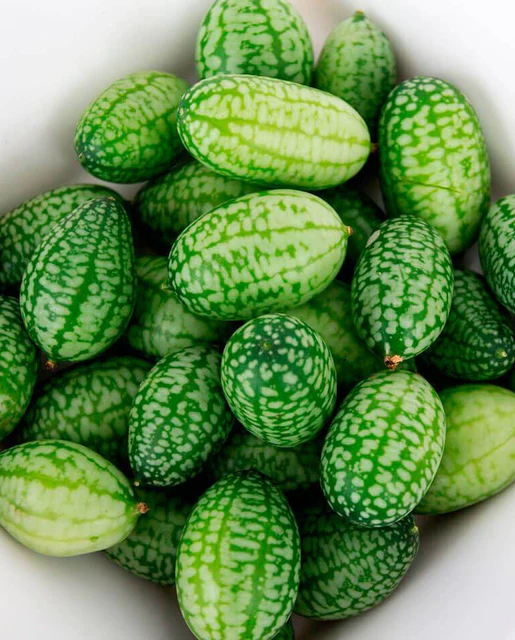
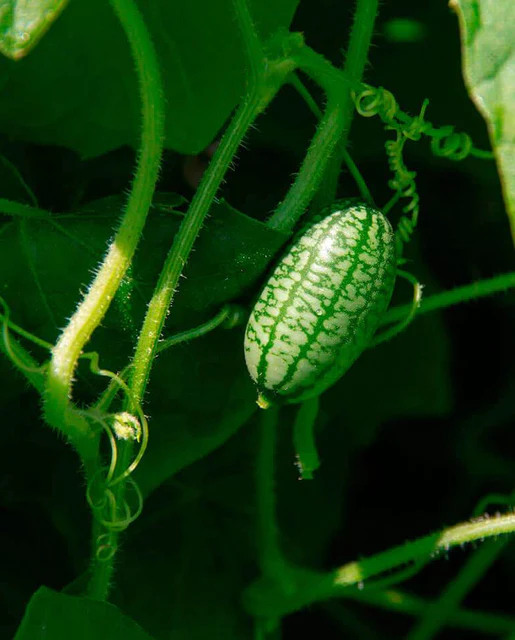
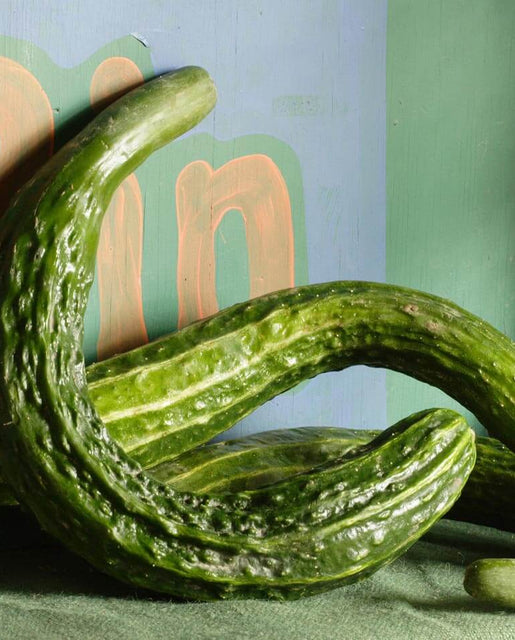
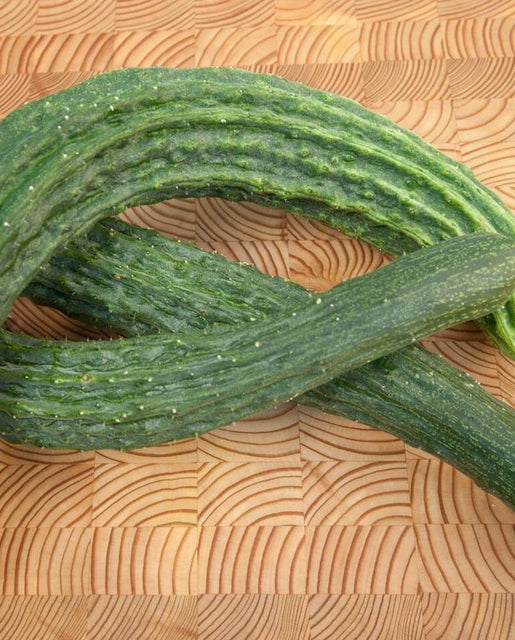
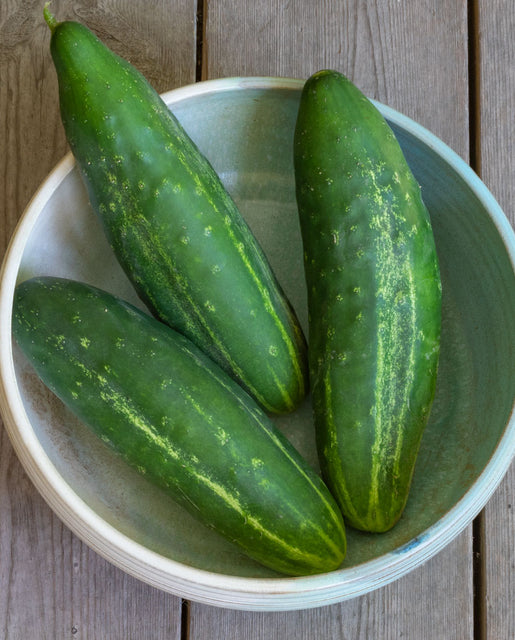
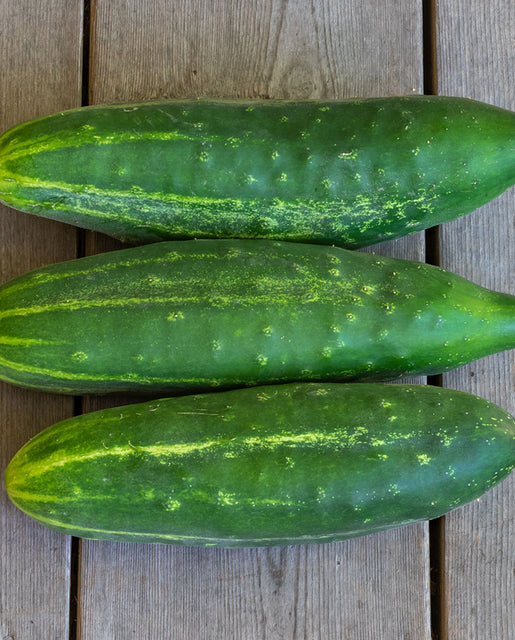




Reviews
There are no reviews yet.